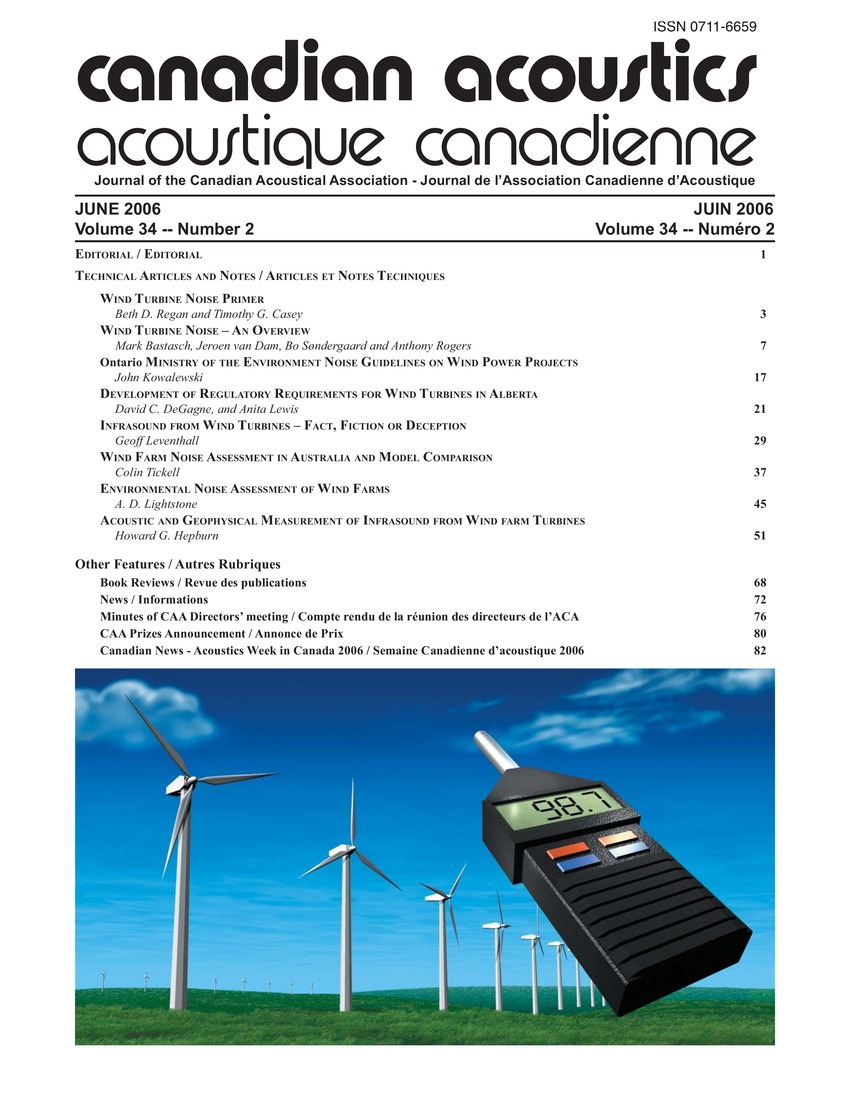Wind turbine noise primer
Mots-clés :
Acoustic wave propagation, Aerodynamics, Electric power generation, Geographic information systems, Impulse noise, Noise pollution, Aerodynamic noise, Meteorological data, Noise regulations, Wind turbine noiseRésumé
Une éolienne est une machine moderne qui produit de l’électricité par le vent. Les éoliennes génèrent quatre types de bruit: tonal, à large bande, de basse fréquence et impulsif. Une autre façon de voir le bruit des éoliennes est de considérer ses sources. Il y a deux catégories fondamentales, soit mécanique et aérodynamique. Le bruit mécanique est transmis le long de la structure de la turbine et est émis de ses surfaces. Le bruit aérodynamique est produit par le flot d’air à travers les pales. Aux États-Unis, les nombreuses centrales d’éoliennes doivent être conformes à la réglementation sur le bruit de l’état et/ou de la région. Une pratique commune est de déterminer la distance minimale des résidences pour mettre en application la limite de bruit la plus sévère.Fichiers supplémentaires
Publié-e
Comment citer
Numéro
Rubrique
Licence
Author Licensing Addendum
This Licensing Addendum ("Addendum") is entered into between the undersigned Author(s) and Canadian Acoustics journal published by the Canadian Acoustical Association (hereinafter referred to as the "Publisher"). The Author(s) and the Publisher agree as follows:
-
Retained Rights: The Author(s) retain(s) the following rights:
- The right to reproduce, distribute, and publicly display the Work on the Author's personal website or the website of the Author's institution.
- The right to use the Work in the Author's teaching activities and presentations.
- The right to include the Work in a compilation for the Author's personal use, not for sale.
-
Grant of License: The Author(s) grant(s) to the Publisher a worldwide exclusive license to publish, reproduce, distribute, and display the Work in Canadian Acoustics and any other formats and media deemed appropriate by the Publisher.
-
Attribution: The Publisher agrees to include proper attribution to the Author(s) in all publications and reproductions of the Work.
-
No Conflict: This Addendum is intended to be in harmony with, and not in conflict with, the terms and conditions of the original agreement entered into between the Author(s) and the Publisher.
-
Copyright Clause: Copyright on articles is held by the Author(s). The corresponding Author has the right to grant on behalf of all Authors and does grant on behalf of all Authors, a worldwide exclusive license to the Publisher and its licensees in perpetuity, in all forms, formats, and media (whether known now or created in the future), including but not limited to the rights to publish, reproduce, distribute, display, store, translate, create adaptations, reprints, include within collections, and create summaries, extracts, and/or abstracts of the Contribution.


